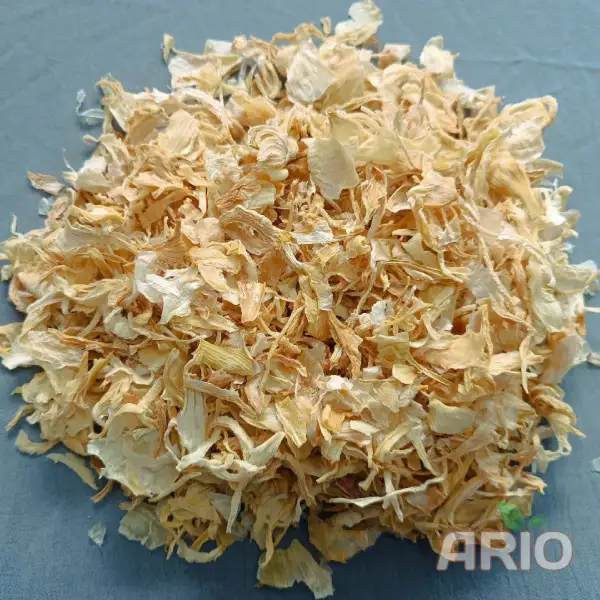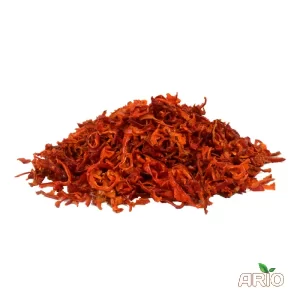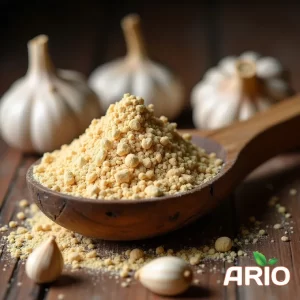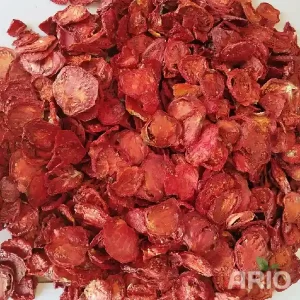Dried Onions:
Market Trends, Quality Standards, and Trade Insights
Types of Dried Onions
- Dehydrated Onion: This type of dried onion is typically produced using a heat-based dehydration process. The moisture content is reduced significantly, allowing the onions to be stored for extended periods without refrigeration.

- Freeze-Dried Onion: In this process, onions are frozen and then placed in a vacuum to remove the moisture. Freeze-dried onions retain much of their original flavor and nutritional value, making them ideal for high-quality food products.
- Sun-Dried Onion: This method involves drying onions under the sun, typically used in regions where solar energy is abundant. It’s an energy-efficient method but may result in a less uniform product.
Global Market Overview
The dried onion market has seen steady growth, driven by the increasing demand for processed foods, convenience foods, and seasoning products. Understanding the dynamics of the global market can help businesses identify opportunities for import and export.
Producing and Exporting Countries
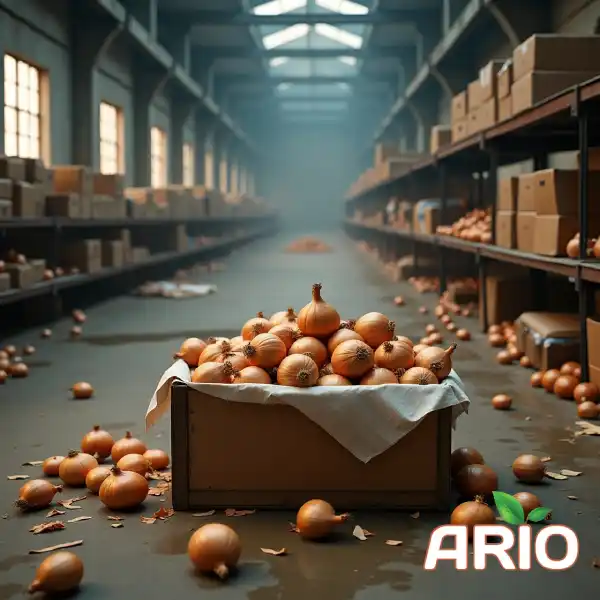 Supplier Dried onions
Supplier Dried onions
- India: India is the world’s largest producer and exporter of dried onions. The country’s climate and large-scale onion farming operations make it an ideal source for dried onion products.
- China: China is another significant player in the dried onion export market, producing large volumes of dehydrated onions.
- United States: The U.S. is a major exporter of dried onion, particularly onion powder and flakes, serving both domestic and international markets.
- Egypt: Known for its strategic location and favorable growing conditions, Egypt plays a significant role in the export of dried onions to Europe and the Middle East.
- France: France is a notable exporter in Europe, primarily supplying the EU region with high-quality dried onions.
Major Importing Countries
- United States: The U.S. is one of the largest importers of dried onions, particularly dehydrated and powdered varieties used in processed food.
- Germany: As a major food processing hub, Germany imports significant quantities of dried onions.
- Japan: Japan imports dried onions for use in sauces, soups, and seasonings.
- Middle East: Countries in the Middle East rely heavily on dried onions for use in spice blends and other culinary applications.
Trade Statistics and Market Insights
Understanding trade statistics is crucial for businesses aiming to enter the dried onion market. The trade values and volumes can provide insights into the demand for different types of dried onions across the globe.
- Export and Import Values: The global dried onion trade reached a market value of over USD 1 billion in recent years. Major exporters such as India and China dominate the trade, while countries like the U.S. and Germany are leading importers.
- Impact of Trade Agreements: Trade agreements, such as those between the EU and countries in North Africa, have streamlined the export process and reduced tariffs, benefiting suppliers and buyers alike.
International Quality Standards
- ISO 22000: This international standard outlines the requirements for a food safety management system, ensuring the quality of dried onions.
- HACCP (Hazard Analysis and Critical Control Points): HACCP certification helps identify and manage potential risks in the food supply chain, making it essential for businesses importing and exporting dried onions.
Certification Importance
Certifications are vital for ensuring that dried onions meet the regulatory requirements of importing countries. For example, the U.S. FDA requires suppliers to meet specific food safety standards to enter the U.S. market.
Regulatory Requirements for Dried Onion Importers and Exporters
Compliance with regulatory requirements is one of the most critical steps for businesses involved in international trade. The specific regulations may vary by country but generally involve documentation, quality checks, and compliance with safety standards.
Import Regulations
- USA: Dried onions must comply with the U.S. Food and Drug Administration (FDA) regulations and be free from contaminants such as pesticides.
- EU: The European Union requires that dried onions meet strict food safety and labeling requirements, including the absence of genetically modified organisms (GMOs).
Finding Reliable Suppliers and Buyers
To succeed in the dried onion trade, businesses must find trustworthy suppliers and buyers. Here are some tips:
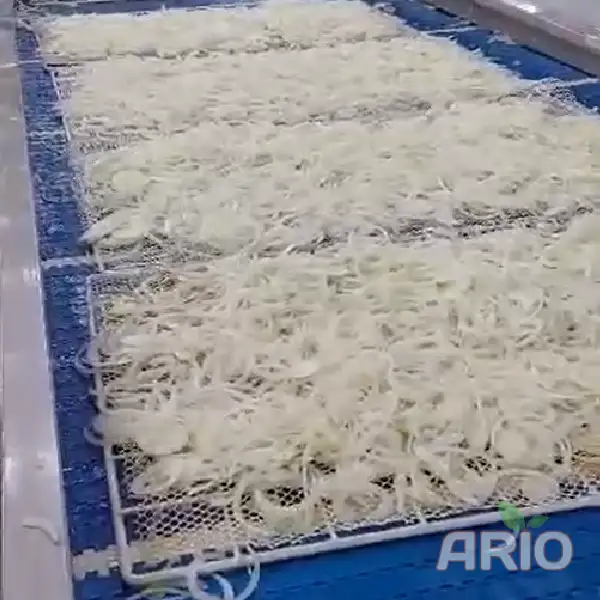
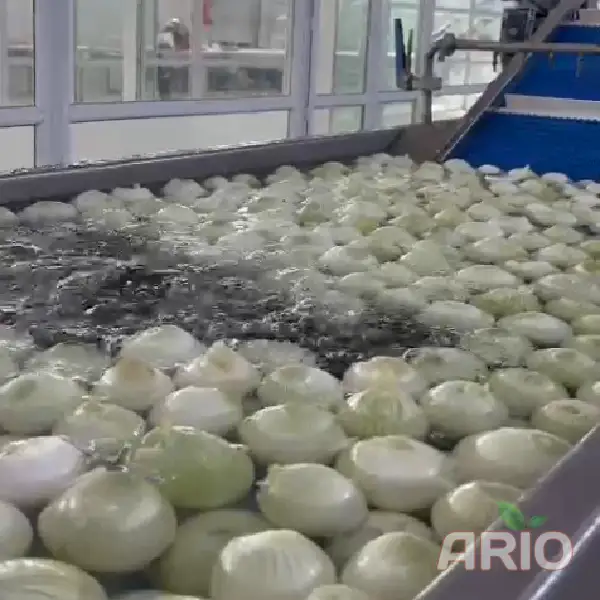 Dried onions at the Ario factory
Dried onions at the Ario factory
Supplier Directories
- Volza Global Trade Data: Provides detailed supplier and buyer directories for dried onions.
- Export-Import GURU: A platform offering insights into suppliers, trade volumes, and market trends.
Evaluating Potential Partners
When evaluating suppliers, consider their certifications, adherence to quality standards, and reliability in meeting delivery timelines.
Shipping Best Practices
- Packaging: Use moisture-proof packaging to prevent spoilage during transit.
- Storage: Dried onions should be stored in cool, dry conditions to maintain their quality.
- Risk Management: Businesses should have contingency plans for potential disruptions in the supply chain, such as natural disasters or political instability.
Future Outlook of the Dried Onion Market
The dried onion market is poised for continued growth, driven by increasing demand for convenience foods and healthy ingredients. However, businesses must remain aware of challenges such as price volatility, regulatory changes, and supply chain disruptions. Strategic partnerships and investments in innovation will be key for long-term success in this sector.
Conclusion
The dried onion trade presents significant opportunities for businesses engaged in international trade. By understanding the market dynamics, quality standards, regulatory requirements, and logistics considerations, companies can position themselves for success in this growing sector. Whether you’re an importer, exporter, or industry professional, this guide provides the insights necessary to navigate the complexities of the global dried onion market.
FAQs about Dried Onions
1. Which countries are the largest exporters of dried onions?
India, China, the U.S., and Egypt are among the largest exporters of dried onions globally.
2. How do I find reliable suppliers of dried onions?
Use trade directories like Volza Global Trade Data and Export-Import GURU to identify reputable suppliers.
3. What are the storage requirements for dried onions?
Store dried onions in a cool, dry place in airtight containers to prevent moisture absorption and spoilage.
4. Are there any certifications required for dried onion imports?
Certifications such as HACCP and ISO 22000 are commonly required to ensure food safety and quality.
5. What are the logistics considerations for exporting dried onions?
Proper packaging, moisture control, and reliable transportation methods are essential for maintaining product quality during export.
6. How do trade agreements affect the dried onion market?
Trade agreements can reduce tariffs and ease regulatory barriers, benefiting both suppliers and buyers in the dried onion trade.

